Cranial Nerves: Sensory vs Motor
Cranial Nerves: Sensory vs Motor
Cranial nerves are essential for various functions and are classified based on their modality: either sensory, motor, or both. Each cranial nerve has a specific function and travels through particular foramina in the skull. Below is a detailed description of each cranial nerve, their nuclei, levels, foramina, mode (sensory, motor, or both), functions, ganglia, and reflexes.
I: Olfactory Nerve

- Foramina: Cribriform plate
- Mode: Sensory
- Function: Sense of smell

- Ganglion/Reflex: None
II: Optic Nerve

- Foramina: Optic canal

- Mode: Sensory
- Function: Vision
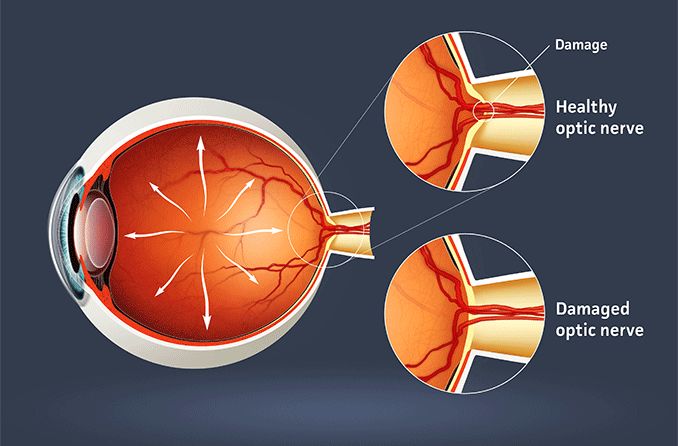
- Ganglion/Reflex: Pupillary light
III: Oculomotor Nerve

- Nucleus Level: Midbrain

- Foramina: Superior orbital fissure
- Mode: Motor
- Functions:
- Motor to levator palpebrae superioris and all extraocular eye muscles except superior oblique and lateral rectus
- Parasympathetic supply to ciliary muscle and constrictor pupillae
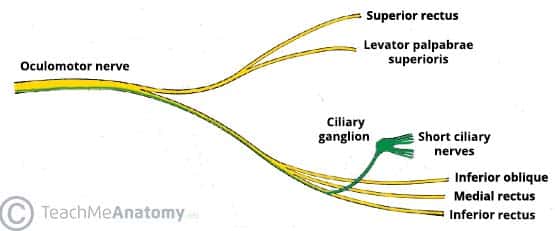
- Ganglion/Reflex: Ciliary, Pupillary light, Accommodation, VOR

IV: Trochlear Nerve

- Nucleus Level: Midbrain

- Foramina: Superior orbital fissure
- Mode: Motor
- Function: Motor to superior oblique muscle
- Ganglion/Reflex: None
V: Trigeminal Nerve
- Nucleus Level: Pons

- Foramina: Superior orbital fissure; Foramen rotundum; Foramen ovale
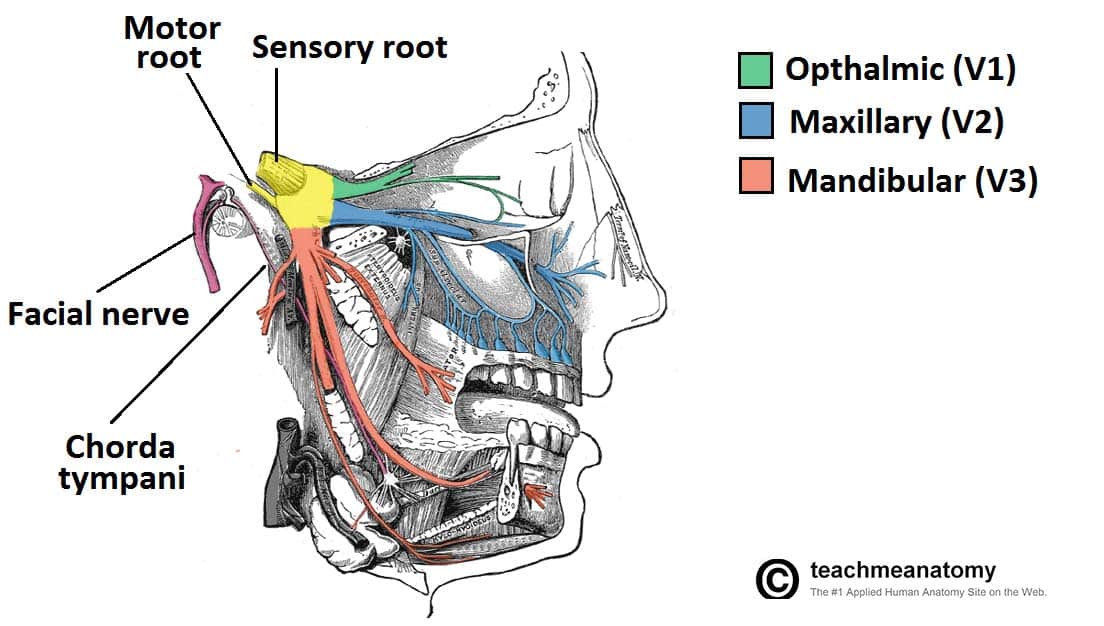
- Mode: Both Sensory and Motor
- Functions:
- Sensory from skin and mucous membranes of head: sclera, sinuses, nasal cavities, meninges, tympanic membrane (external surface), TMJ, teeth and gingivae, anterior 2/3 tongue and oral cavity

- Motor to muscles of mastication, mylohyoid, anterior belly of digastric, tensor veli palatine, and tensor tympani
- Sensory from skin and mucous membranes of head: sclera, sinuses, nasal cavities, meninges, tympanic membrane (external surface), TMJ, teeth and gingivae, anterior 2/3 tongue and oral cavity
- Ganglion/Reflex: Trigeminal, Corneal blink, Sneeze, Jaw jerk

VI: Abducens Nerve

- Nucleus Level: Pons
- Foramina: Superior orbital fissure
- Mode: Motor
- Function: Motor to lateral rectus muscle
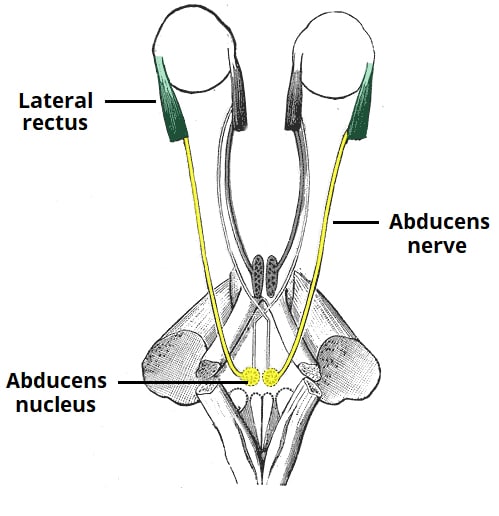
- Ganglion/Reflex: VOR
VII: Facial Nerve

- Nucleus Level: Pons

- Foramina: Internal Acoustic Meatus; Stylomastoid Foramen
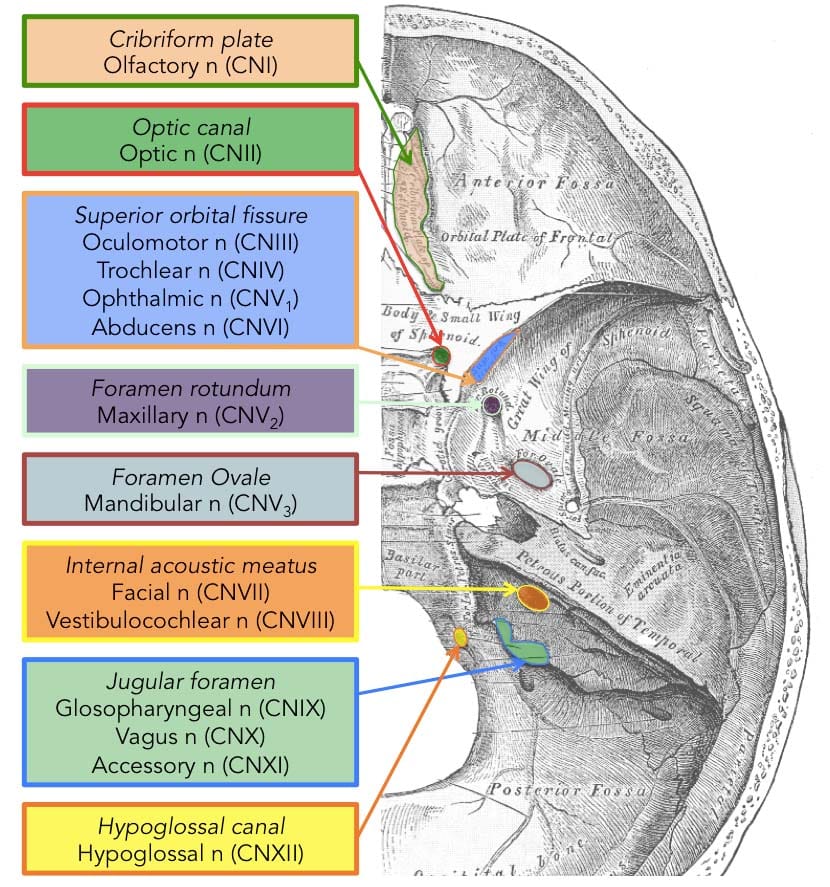
- Mode: Both Sensory and Motor
- Functions:
- Sensation from part of the external ear, external surface of the tympanic membrane, and palate
- Taste anterior 2/3 of tongue and palate
- Parasympathetic supply to lacrimal, nasal, submandibular, and sublingual glands
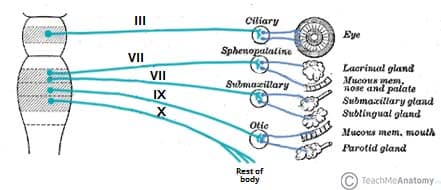
- Motor to muscles of facial expression, posterior belly of digastric, stylohyoid, and stapedius
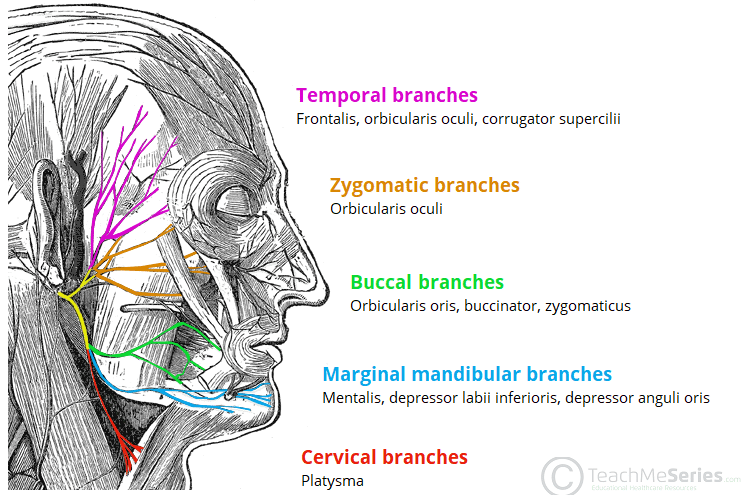
- Ganglion/Reflex: Geniculate, Pterygopalatine, Submandibular, Corneal blink

VIII: Vestibulocochlear Nerve
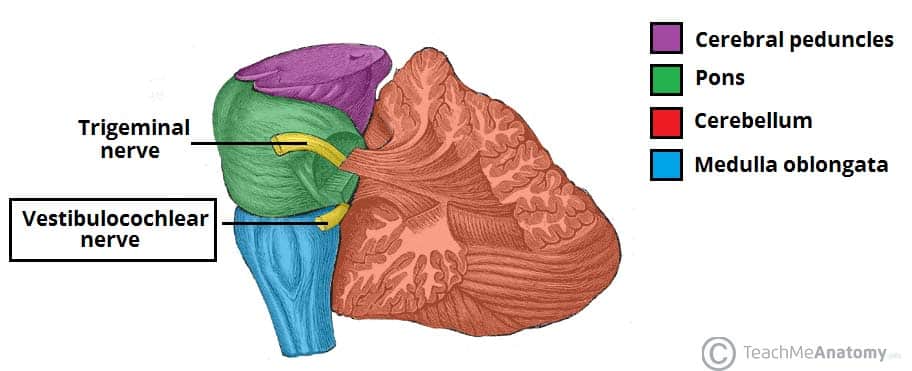
- Nucleus Level: Pons/Medulla

- Foramina: Internal Acoustic Meatus
- Mode: Sensory
- Functions:
- Balance (Vestibular)
- Hearing (Spiral)
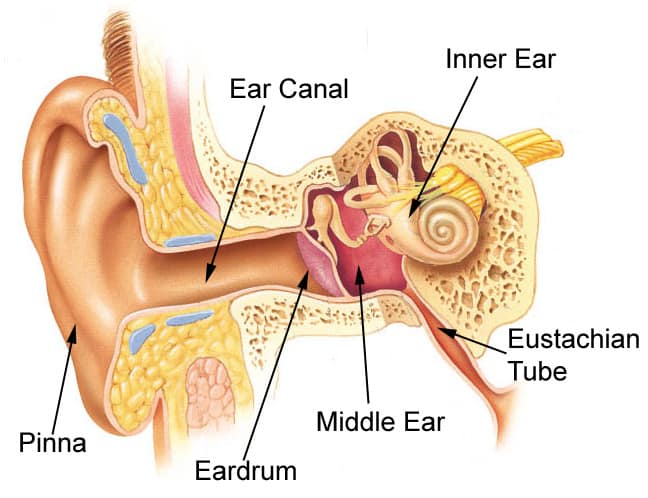
- Balance (Vestibular)
- Ganglion/Reflex: Vestibular (VOR, nystagmus), Spiral
IX: Glossopharyngeal Nerve
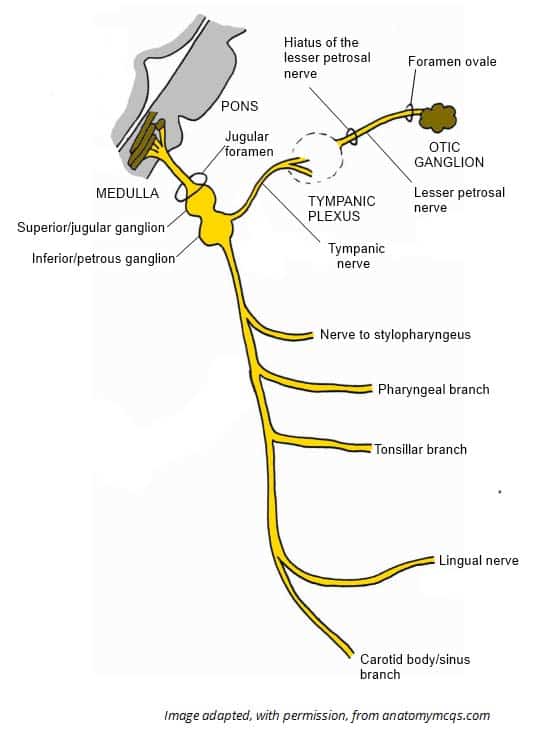
- Nucleus Level: Medulla

- Foramina: Jugular foramen
- Mode: Both Sensory and Motor
- Functions:
- Sensation from external ear, posterior 1/3 of tongue, internal surface of tympanic membrane, oropharynx, visceral sensory from the carotid body & sinus
- Taste for posterior 1/3 of tongue
- Motor to stylopharyngeus muscle
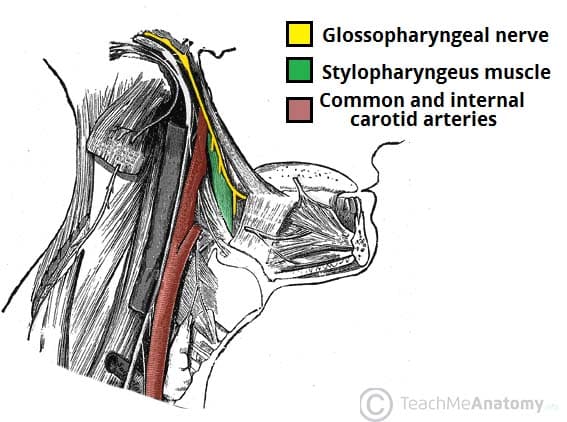
- Parasympathetic to parotid gland

- Ganglion/Reflex: Superior, Inferior, Otic, Gag

X: Vagus Nerve

- Nucleus Level: Medulla

- Foramina: Jugular foramen

- Mode: Both Sensory and Motor
- Functions:
- Sensation from part of the external ear, external acoustic meatus, epiglottis and base of tongue, laryngopharynx, larynx, viscera, and aorta
- Taste from the epiglottis and base of tongue

- Motor to muscles of pharynx, larynx, and palate (excluding stylopharyngeus and tensor veli palatine)
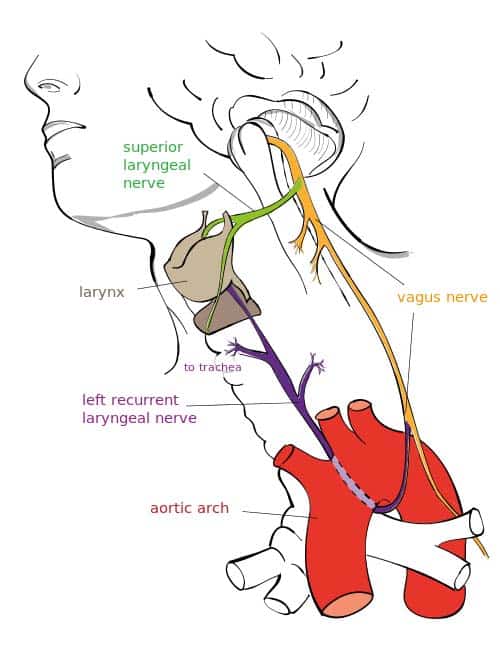
- Parasympathetic supply to thoracic and abdominal viscera
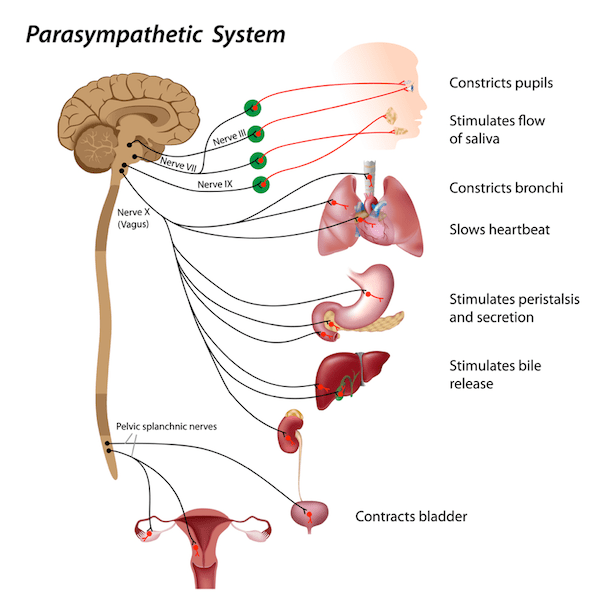
- Sensation from part of the external ear, external acoustic meatus, epiglottis and base of tongue, laryngopharynx, larynx, viscera, and aorta
- Ganglion/Reflex: Superior, Inferior, Sneeze, Gag, Cough
XI: Accessory Nerve
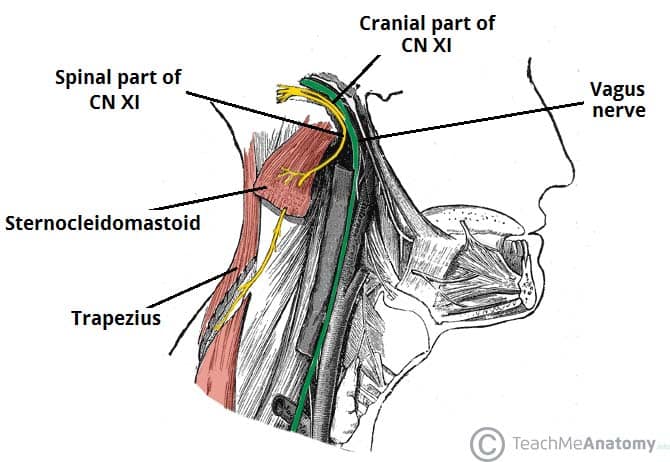
- Nucleus Level: Cervical Spinal Cord
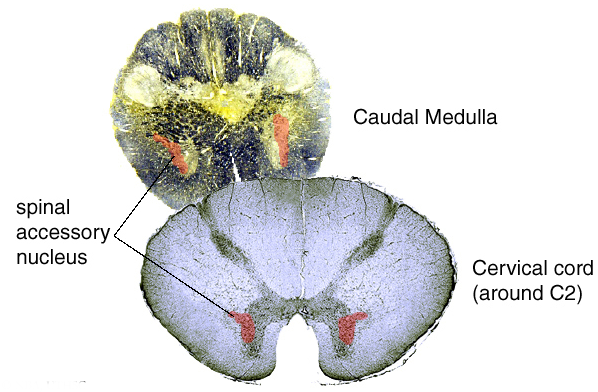
- Foramina: Foramen Magnum; Jugular foramen
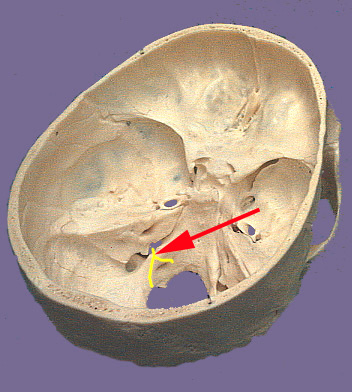
- Mode: Motor
- Function: Motor to sternocleidomastoid and trapezius muscles

- Ganglion/Reflex: None
XII: Hypoglossal Nerve
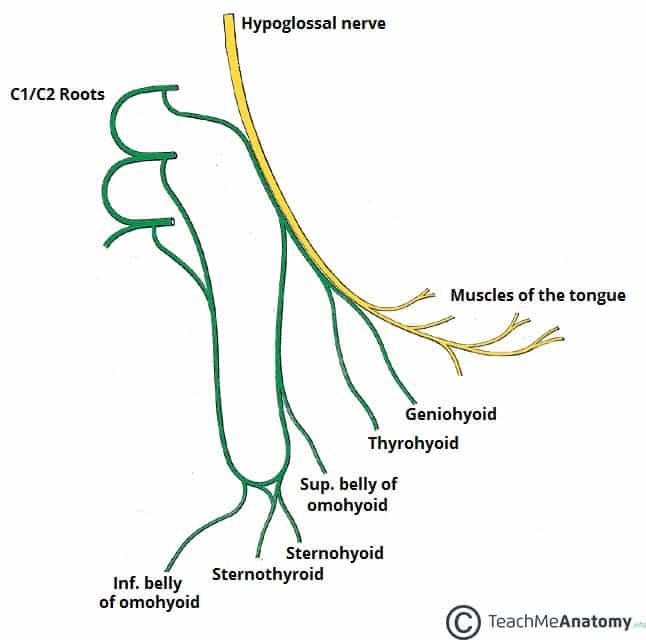
- Nucleus Level: Medulla

- Foramina: Hypoglossal foramen
:watermark(/images/watermark_only_413.png,0,0,0):watermark(/images/logo_url_sm.png,-10,-10,0):format(jpeg)/images/anatomy_term/canalis-nervi-hypoglossi/suHp1C0eHGTzbFQGleAjQ_Canalis_hypoglossi_01.png)
- Mode: Motor
- Function: Motor to intrinsic and extrinsic muscles of tongue (excluding palatoglossus)
:background_color(FFFFFF):format(jpeg)/images/article/the-hypoglossal-nerve/mUtVSxYk5qA79nKHFKQEA_course-of-hypoglossal-nerve_english.jpg)
- Ganglion/Reflex: None
Sensory and Motor Modalities
- General Somatic Afferent (GSA): Sensory from the skin and membranes, e.g., cranial nerves V, VII, IX, X.

- General Visceral Afferent (GVA): Sensory from viscera and organs, e.g., cranial nerves IX, X.

- Special Sensory Afferent (SSA): Specialized senses like vision and hearing, e.g., cranial nerves II, VIII.

- General Somatic Efferent (GSE): Motor to skeletal muscles, e.g., cranial nerves III, IV, VI, XII.

- Special Visceral Afferent (SVA): Sensory related to taste and smell, e.g., cranial nerves I, VII, IX, X.

- Special Visceral Efferent (SVE): Motor to muscles derived from branchial arches, e.g., cranial nerves V, VII, IX, X, XI.

- General Visceral Efferent (GVE): Motor to visceral organs and parasympathetic supply, e.g., cranial nerves III, VII, IX, X.
